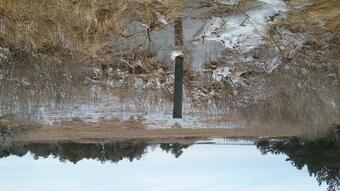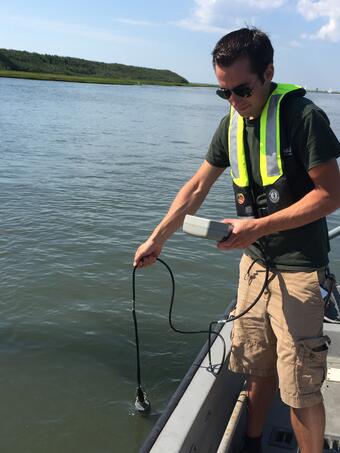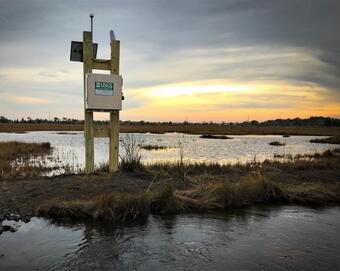Long-term Water Monitoring Networks in New Jersey
The accurate, long-term monitoring networks of New Jersey Water Science Center provide valuable data in real-time and historical perspective to compare that data to. The longer a monitoring location is in operation, the more valuable it becomes, since more statistical comparisons can be performed. Our field technicians continuously make field measurements and maintain these networks.

Streamgaging Network
Discharge data are crucial for modeling, forecasting, and statistical analysis. These data help properly size a culvert, determine how high a bridge must be to withstand high waters, allow water resource engineers to manage a basin’s water supply, and forecasters predict flood crests.

Groundwater Network
Groundwater Levels provide indicators of available water supplies and drought resiliency.

Water-quality Network
Both discrete (single point) and continuously collected, allow for analysis of constituent loadings (how much?), effects of land use change on our rivers, and detection of spills and pollutants in our waterways and aquifers.
- Real-time Water Quality Monitors
- Historic Water Quality Data
- Ambient Surface-Water-Quality Monitoring Network
- Ambient Groundwater-Quality Monitoring Network

Tide Network
The Tidal Network provides data to assist with forecasting, statistical analysis, and storm preparation done by our cooperators.
- Real-Time Tide Data
- New Jersey SWaTH (Coastal Surge, Wave, and Tide Hydrodynamics Network)
Precipitation and Weather Networks
Provides data augmentation to many locations for: Precipitation, Water and Air Temperature, and even Wind speed and direction at some of our coastal sites.
Below are other science projects associated with this project.
The New Jersey Streamgaging Network
New Jersey Groundwater Network
New Jersey Ambient Surface-Water-Quality Monitoring Network
New Jersey Ambient Groundwater-Quality Monitoring Network
The accurate, long-term monitoring networks of New Jersey Water Science Center provide valuable data in real-time and historical perspective to compare that data to. The longer a monitoring location is in operation, the more valuable it becomes, since more statistical comparisons can be performed. Our field technicians continuously make field measurements and maintain these networks.

Streamgaging Network
Discharge data are crucial for modeling, forecasting, and statistical analysis. These data help properly size a culvert, determine how high a bridge must be to withstand high waters, allow water resource engineers to manage a basin’s water supply, and forecasters predict flood crests.

Groundwater Network
Groundwater Levels provide indicators of available water supplies and drought resiliency.

Water-quality Network
Both discrete (single point) and continuously collected, allow for analysis of constituent loadings (how much?), effects of land use change on our rivers, and detection of spills and pollutants in our waterways and aquifers.
- Real-time Water Quality Monitors
- Historic Water Quality Data
- Ambient Surface-Water-Quality Monitoring Network
- Ambient Groundwater-Quality Monitoring Network

Tide Network
The Tidal Network provides data to assist with forecasting, statistical analysis, and storm preparation done by our cooperators.
- Real-Time Tide Data
- New Jersey SWaTH (Coastal Surge, Wave, and Tide Hydrodynamics Network)
Precipitation and Weather Networks
Provides data augmentation to many locations for: Precipitation, Water and Air Temperature, and even Wind speed and direction at some of our coastal sites.
Below are other science projects associated with this project.







